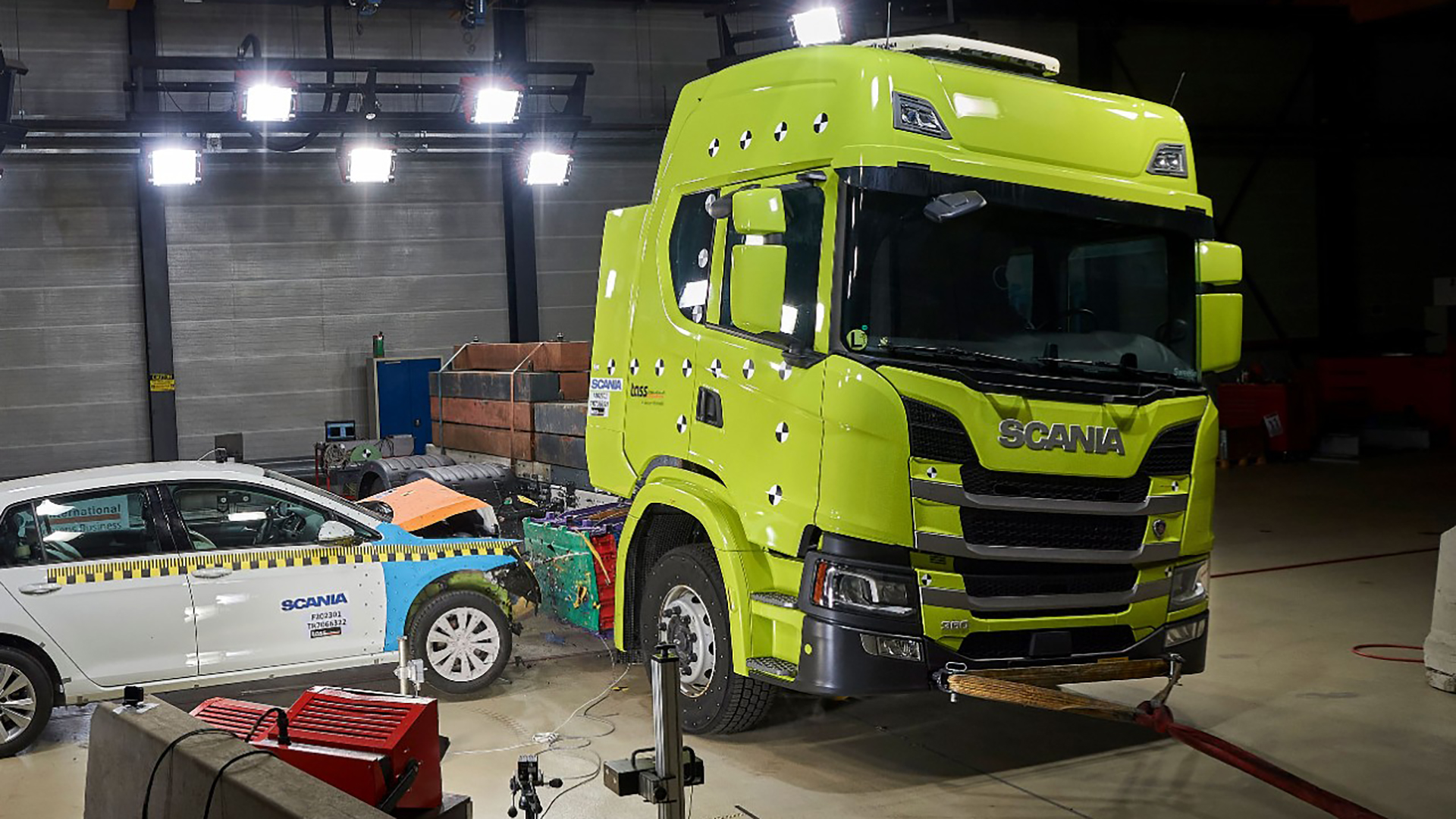

As part of the Volkswagen Group via Traton, Sweden’s Scania does just as many simulations as any other major player in the truck business, making the most of such cost-efficient technologies to speed up its development process. Yet when it comes to testing the durability of external battery packs set to power their latest electric semis, no software can compare to the sheer force of a Volkswagen Golf already missing its front bumper cover. As Mikael Littmann, head of mechanical testing at Scania explains, it’s all very scientific given how a real car puts a lot more stress on the components than a barrier would.
On one hand, a small family car crashing into the side of a cabover semi under laboratory conditions is never going to be as spectacular as a hypercar shredding expensive carbon fiber under its matte blue crash test paint. However, while a carbon monocoque or even a regular road car chassis can package its delicate battery packs inside the wheelbase in a very protected environment, the tractor unit of a semi can’t sacrifice any passenger or powertrain space to keep the batteries inside the frame. Instead, the cells go into boxes on the side, which replace the fuel tanks.


Available in 4×2, 6×2 and 6×2*4 wheel configurations in various wheelbases and cab configurations, Scania’s electric trucks use an oil-cooled permanent magnet electric motor peaking at 395 horsepower and 1,622 pound-feet of torque, with a continuous output of 308 hp and 958 pound-feet. Thanks to having nine lithium-ion batteries on the larger trucks for 300 kilowatt hours, or five on the smaller ones for 165 kWh, Scania is claiming up to 155 miles on a full charge.

Crash testing an electric truck differs from a usual combustion engine model due to the need for the impact to be distributed throughout the structure surrounding the battery. What Scania wanted to see after its completed simulation runs were deformed plastic and the kinetic energy of the live crash directed towards less critical components.
With the battery packs disassembled and showing no damage to the cells, the results are in line with what you’d expect from a Swedish vehicle maker.

Got a tip? Send us a note: tips@thedrive.com